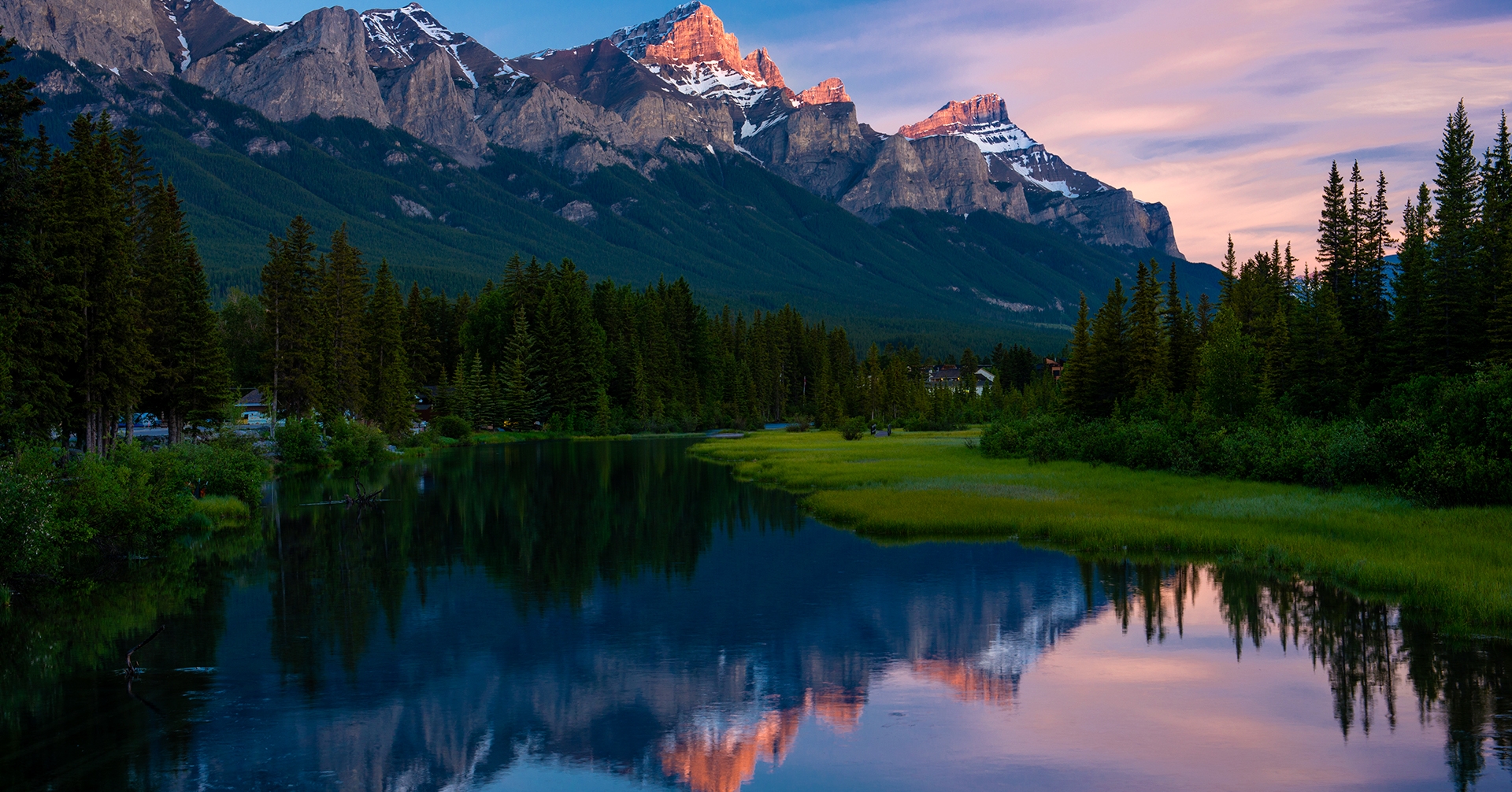Our mountains are high, our roots are deep
Aboriginal peoples hunted bison in the Bow Valley prior to the arrival of Europeans, leaving behind archaeological sites dating back more than 8,000 years, some of the oldest in Canada. The Stoney Nakoda, Siksika, Blood, and Kootenai First Nations all have deep connections to Canmore Kananaskis. Visitors can find 1,000 year old pictographs left by First Nations in nearby Grotto Canyon.
The town of Canmore itself was established in 1884 as a hard-working coal mining town servicing Canadian Pacific Railway trains. The community thrived due to the rich coal seams that dominate the eastern ranges of the Canadian Rockies—and boasted championship hockey teams—until the last of the coal mines shut down in 1979.
The town of Canmore was named in honour of King Malcolm of Scotland, from the Gaelic word Ceann Mór, which translates to Big Head, in reference to one’s elevated height or stature. Be sure to check out Canmore’s favourite big head next to the Policeman’s Creek Bridge on Main Street.
Canmore’s fortunes and character were transformed when the 1988 Calgary Winter Olympic Games selected the town to host the cross-country and biathlon events. Canmore and its brand new Nordic Centre drew not just TV cameras but also tourists, property developers, and young families looking to buy homes.
Since the Olympics, Canmore has more than tripled its population and is now a vibrant mountain lifestyle community and a popular destination for outdoor enthusiasts. Today, Canmore embraces a vibrant mix of business owners and professionals, tourism operators and mountain guides, world-class athletes and families, artists, filmmakers, NGO headquarters, writers, and impressively active retirees.
Where Our Famous Landmarks Got Their Names
Three Sisters
One of the most recognizable and photographed chain of mountains in the area is the iconic Three Sisters, originally called the Three Nuns after a heavy snowfall left them resembling nuns in white veils. George Dawson, head of the Geological Survey of Canada officially named them the Three Sisters on his 1886 map. Individually they are known as the Big Sister (Faith), Middle Sister (Charity), and Little Sister (Hope). Alternately they are known as Frances, Olive and Grace, for the three daughters of George Stewart, the first superintendent of Rocky Mountain National Park, later known as Banff National Park.
Ha Ling Peak
A popular mountain named in honour of a railway worker who climbed the peak in less than 10 hours in 1896. He then climbed it a second, equally speedy time, planting a flag on its summit as proof to dispel doubts as to the veracity of his first ascent. Today you can hike or scramble up to the summit yourself, on the Ha Ling Trail.
Mount Rundle
Linking Banff and Canmore, Mount Rundle was named by explorer John Palliser for the Reverend Robert Rundle who travelled from England to Canada in 1840 to work with the First Nations peoples. It is now a strenuous hike considered one of the most popular scrambles near Banff.
Mount Lady Macdonald
Named for the wife of Canada’s first Prime Minister, John A. Macdonald, after she insisted on riding on the locomotive’s cowcatcher during a railroad trip through the Rockies. Located within Bow Valley Wildland Provincial Park, it’s rated a difficult trail primarily used for hiking, with spectacular views of the mountains.
Grassi Lakes
Named for Lawrence Grassi, a keen hiker and climber who emigrated from Italy to work in Canmore’s coal mines, but left his indelible mark as one of the Rockies’ most skilled trail builders. A beautiful family hike with a waterfall and two majestic turquoise lakes.
Canmore’s Historic Sites
The following map invites you to discover and learn about Canmore’s history, culture and landscapes.
To further your exploration when you are here, be sure to visit the Canmore Museum located in picturesque Downtown Canmore.
